Access our facilities and services
The OU’s Walton Hall campus in Milton Keynes has well-equipped research facilities supported by dedicated scientists and technicians. Many of our research facilities are available for use by organisations in both the public and private sector.
Our core capabilities lie in the analytical techniques that underpin Materials Engineering, Physical Sciences, Environment, Earth & Ecosystem Sciences and Life, Health and Chemical Sciences. Below is a selection of some of the key facilities and services we have to offer.
For more information on our research facilities and how you can access them, please contact our laboratory manager.
Research facilities at The Open University
Examples of our facilities
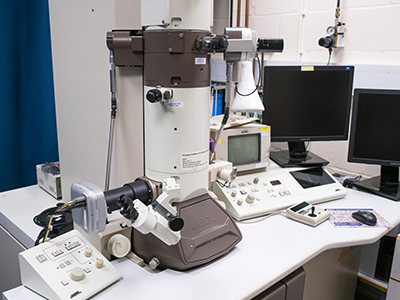
Electron Microscopy
The Electron Microscopy (EM) Suite has the capability to analyse everything from brain tissue to rocks. In addition to transmission and scanning electron microscopy, the OU EM Suite team are world leaders in 3D reconstruction electron microscopy. This pioneering new technique is already being used in medical research to shed light on cognitive disabilities.
The EM Suite along with the expertise of our dedicated electron microscopy team provides a world class resource which is available for use by researchers and industry.
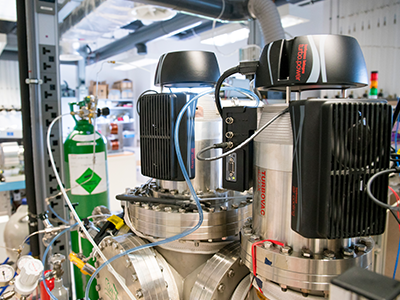
The Gas Chromatography Mass Spectroscopy Laboratory
The Gas Chromatography Mass Spectroscopy Laboratory utilises stable isotopes and (GCxGC) Gas Chromatograph-Mass Spectroscopy in areas as diverse as atmospheric monitoring, forensic drug detection, steroid profiling, sports testing and disease classification. Our instruments can be interfaced with a host of sample introduction systems which allows all forms of samples (solids, liquids or gases) to be analysed.
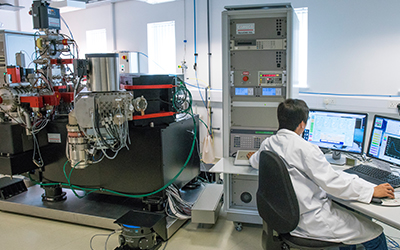
NanoSIMS Laboratory
Our €3.5m Cameca ‘NanoSIMS' Secondary Ion Mass Spectrometer is one of only three in the UK. It is the latest generation of Secondary Ion Mass Spectrometer (Ion Microprobe) instrumentation, allowing high-sensitivity compositional analysis of up to seven species (elements, molecules or isotopes) simultaneously at a normal special resolution of down to 50nm, with high mass resolution.
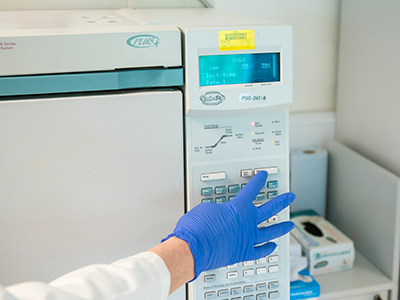
Stable Isotope Geochemistry Laboratory
The Stable Isotopes and Geochemistry Laboratory offers isotopic (C, O, N, H) analysis of organic and carbonate terrestrial and extra-terrestrial samples. Our work to date has included analysis of samples collected from such as soil from core drills in impact craters and lake beds, rock deposits, shells, plants, lunar samples and meteorites.
Our analyses provide information relating to numerous factors that have influenced the formation of a sample such as the source, origin site, composition and temperature.
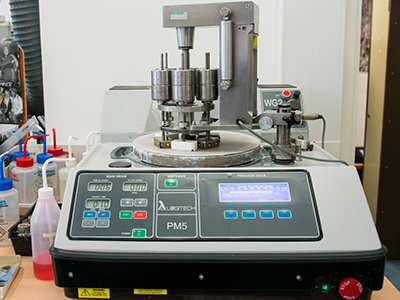
Thin Sections Laboratory and Geochemistry Laboratory
The highly experienced technical staff of the Thin Sections Laboratory are able to process standard and larger sized thin sections of materials ranging from pottery and rocks to meteorite samples.
We have the expertise to apply advanced preparation (e.g. resin impregnation) and finishing techniques (e.g. polished probe thin sections) to samples along with Laser Ablation Inductively Coupled Plasma Mass Spectrometry to determine a large number of trace elements.
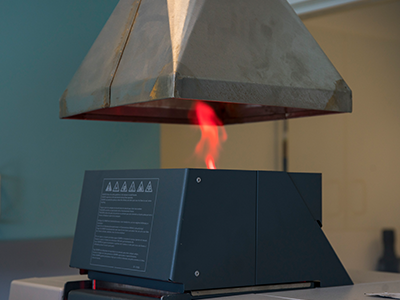
Ecosystems Analytical Laboratories
The Ecosystems Laboratories offer experimental facilities, preparatory and analytical laboratories to analyse a range of environmental materials. Our experimental facilities include controlled environment chambers with sub-ambient CO2 control capabilities along with bespoke biodegradability testing apparatus.
The Preparatory and Analytical laboratories are supported by a team well versed in sampling, preparing and analysing challenging environmental substrates including soil, water, plant and waste materials. Our analytical capability includes elemental analysis (inductively coupled atomic/optical emission spectroscopy, atomic absorption spectroscopy, total organic carbon analysis), ion chromatography for simple ions in aqueous solution, and gas chromatography for permanent gases and volatile organic compounds.
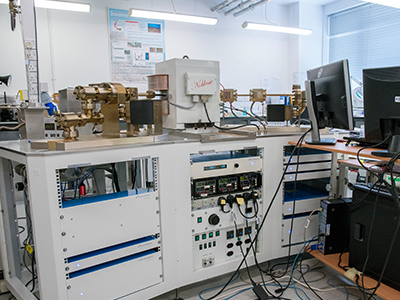
The Argon/Argon and Noble Gas Research laboratory
The Argon/Argon Laboratory was first established in 1989 and has built an international reputation for high quality Ar/Ar and rare gas analysis by laser ablation methods. The OU pioneered the use of ultraviolet laser for Ar/Ar dating and is dedicated to developing and modifying techniques for dating ultra-small samples to high precision.
Our Ar/Ar dating research activities are diverse and have been used to assess samples from meteorite impacts, volcanoes, mountain-building, sandstone and mudrock provenance.
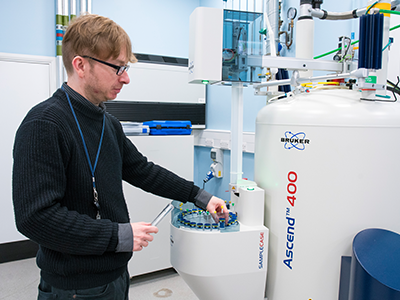
NMR Laboratory
Nuclear Magnetic Resonance (NMR) effect is a phenomenon that causes certain nuclei to absorb and re-emit energy of a particular frequency when they are exposed to a large magnetic field. The NMR spectrometer analyses samples of organic compounds in solution by measuring the frequency at which this energy transfer takes place, sometimes referred to as chemical shift.
Since the chemical shift is related to the type of nucleus and its bonding environment, NMR spectrometry can confirm the presence of and quantify known molecules and help in the identification of unknown molecules either by comparison to existing spectra or by elucidating the chemical structure directly using different complementary NMR experiments.
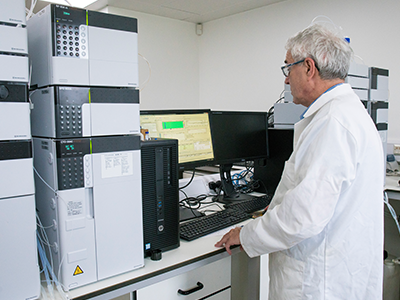
STEM On-Campus Teaching Labs
The STEM On-Campus Teaching Labs can each accommodate up to 30 students and are fully equipped to teach practical laboratory skills and are available to hire for use in training courses.
The Labs also include a studio with AV equipment that enables live "Labcasts" via the internet thereby enabling real-time training to students all over the world.
UV-Vis-NIR Spectroscopy Lab (SP4PS)
The UV-Vis-NIR laboratory has been recently developed with a JASCO MSV-5700 UV-Vis-NIR microspectrophotometer (MSP) fitted with a Cassegrain objective lens. The MSP has two separate light sources (deuterium and tungsten; sources switched at 340 nm) and diffraction gratings (200 – 840 nm and 840 – 2500 nm), giving a continuous spectral range of 200 – 2500 nm. This allows for the analysis of spectral features in laboratory samples and direct comparisons to asteroids, moons, and planets.

Employer Champion
The OU was awarded Employer Champion Status by the Science Council last year which recognises that we invest in our scientists and technicians Continuing Personal Development (CPD).
Find out how we can work with you
Contact our Enterprise team by email.
